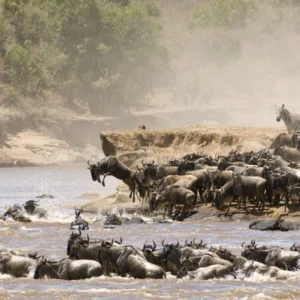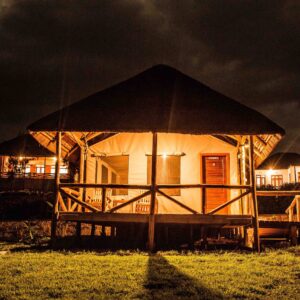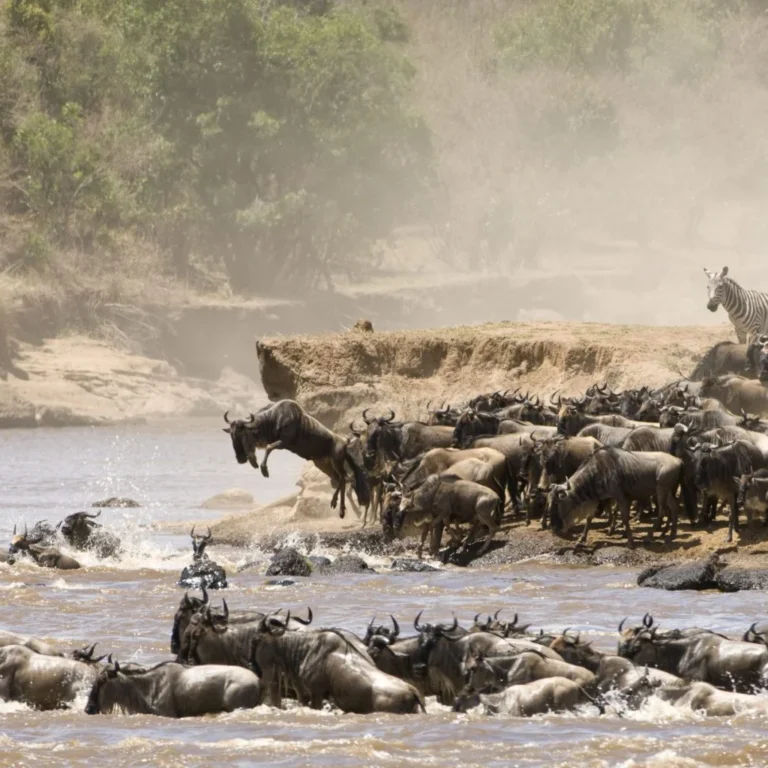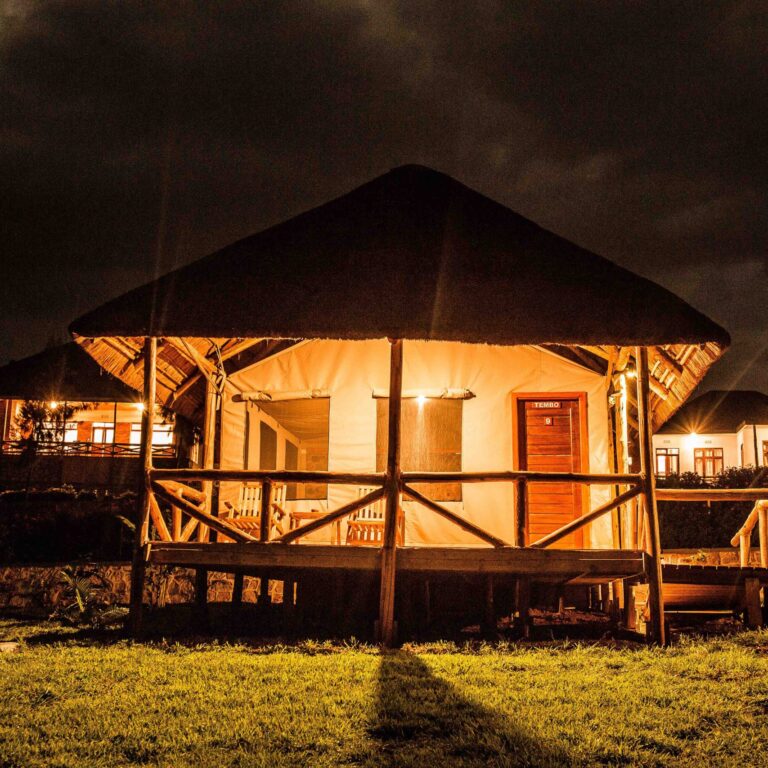Africa is home to a diverse range of wildlife, and among its most fascinating creatures are the horned animals. These animals are not only iconic symbols of the continent but also play crucial roles in their ecosystems. Africa is home to a wide variety of horned animals, including antelopes, buffalo, rhinos, and even some reptiles. Notable examples include the eland, kudu, oryx, wildebeest, and the African buffalo. There are also spiral-horned antelopes such as the bushbuck, nyala, and bongo. Additionally, the Saharan horned viper is a reptile known for its horns. In this comprehensive list, we delve into the various horned animals that roam the African plains, forests, and mountains, providing detailed information about each species.
1. The African Buffalo (Syncerus caffer)
The African Buffalo, also known as the Cape Buffalo, is one of the most formidable animals in Africa. Mature males can weigh up to 1,000 kg (2,200 lbs). Known for their massive, curved horns that can span up to 1 meter (3.3 feet). These horns are used for defense against predators and in dominance battles within their herds. African Buffalos are found in various habitats, including savannas, grasslands, and forests, and are known for their gregarious nature, often forming large herds.
2. Greater Kudu (Tragelaphus strepsiceros)
The Greater Kudu is renowned for its impressive spiral horns. Which can grow up to 1.8 meters (6 feet) in length. These horns are a defining feature of the males and are used in courtship displays and fights with rivals. Greater Kudus inhabit woodlands and savannas, where their striped coats and majestic horns make them a sight to behold. They are also known for their incredible jumping ability, capable of leaping over obstacles as high as 2.5 meters (8 feet). Greater Kudu: Known for its magnificent spiraled horns and striped body, the Greater Kudu is a symbol of African wilderness.
3. Eland (Taurotragus oryx)
Elands are the largest antelopes in Africa, with males weighing up to 940 kg (2,070 lbs). Both males and females possess horns, but the males’ are more robust and spiral tightly. These horns can reach up to 1 meter (3.3 feet) in length. Elands are adaptable creatures, inhabiting grasslands, savannas, and woodlands. They are known for their graceful movements and are a vital part of the ecosystem, serving as prey for large predators and participating in seed dispersal through their grazing habits.
4. Impala (Aepyceros melampus)
Impalas are among the most common antelopes in Africa, recognizable by their slender bodies and lyre-shaped horns. Only males have horns, which can grow up to 90 cm (35 inches) long. These horns used in territorial battles and for defense against predators. Impalas are highly adaptable and thrive in various habitats, from savannas to woodlands. They known for their remarkable agility, capable of leaping up to 10 meters (33 feet) in a single bound to evade predators.
5. Springbok (Antidorcas marsupialis)
The Springbok a small antelope known for its graceful horns. Unique behavior called “pronking,” where it leaps into the air with all four legs straight. Both males and females have horns, with the males’ being more prominent, reaching lengths of up to 35 cm (14 inches). Springboks found in arid regions, grasslands, and savannas. Their horns serve multiple purposes, including defense, mating displays, and establishing dominance.
6. Gemsbok (Oryx gazella)
The Gemsbok, also known as the Oryx, is a striking antelope with long, straight horns that can reach up to 85 cm (33 inches). Both males and females possess these impressive horns. Which used for defense against predators and in battles for territory and mates. Gemsboks adapted to arid environments, such as deserts and semi-deserts, and can survive without water for extended periods by deriving moisture from the plants they consume.
7. Waterbuck (Kobus ellipsiprymnus)
Waterbucks robust antelopes characterized by their long, lyre-shaped horns and shaggy coats. Only males have horns, which can grow up to 100 cm (39 inches) in length. These horns used in battles for dominance and protection against predators. Waterbucks typically found near water sources, such as rivers, lakes, and swamps, where they feed on grasses and other vegetation. Their horns and unique scent glands contribute to their distinctive presence in their habitats.
8. Bushbuck (Tragelaphus scriptus)
The Bushbuck is a medium-sized antelope with spiral horns that are present only in males. These horns can grow up to 55 cm (22 inches) long used for defense and in fights for territory and mates. Bushbucks highly adaptable, found in various habitats, including forests, woodlands, and savannas. They known for their solitary nature and elusive behavior, often remaining hidden in dense vegetation to avoid predators.
9. Sable Antelope (Hippotragus niger)
The Sable Antelope is a strikingly beautiful animal with long, curved horns that can reach up to 1.2 meters (4 feet) in length. Both males and females have horns, but the males’ are more pronounced. These horns used in dominance displays and to fend off predators. Sable Antelopes typically found in savannas and woodlands, where their elegant black-and-white markings make them a spectacular sight. They are strong social structure, often forming herds led by a dominant male.
10. Nyala (Tragelaphus angasii)
Nyala antelopes are easily recognizable by their beautiful spiral horns and striking coat patterns. Only males have horns, which can grow up to 80 cm (31 inches) long. These horns used in fights for dominance and during the mating season. Nyalas inhabit woodlands, savannas, and thickets, where their cryptic coloring helps them blend into their surroundings. They known for their shy and elusive behavior, often remaining hidden from view.
11. Common Reedbuck (Redunca arundinum)
The Common Reedbuck is a medium-sized antelope with ringed, forward-curving horns that can grow up to 45 cm (18 inches) in length. Only males have horns, which they use for defense and in fights for territory. Reedbucks found in wetlands, floodplains, grasslands, feed on grasses other vegetation. Their distinctive whistling calls are a common sound in their habitats, especially during the mating season.
12. Roan Antelope (Hippotragus equinus)
Roan Antelopes are large and powerful animals with backward-curving horns that can grow up to 1 meter (3.3 feet) long. Both males and females have horns, but the males’ are larger and more robust. These horns used in fights for dominance and protection against predators. Roan Antelopes typically found in savannas and grasslands, where their robust build and social structure allow them to thrive in their environments.
What are some of the most notable horned animals in Africa?
Africa is home to a wide variety of horned animals. Some of the most notable include the African Buffalo, Greater Kudu, Eland, Impala, Springbok, Gemsbok, Waterbuck, Bushbuck, Sable Antelope, Nyala, Common Reedbuck, and Roan Antelope. Each of these species is unique and plays a crucial role in their respective ecosystems.








